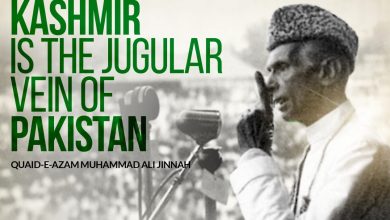 The Jammu Massacre of 1947 stands as one of South Asia’s most tragic and under-acknowledged episodes, overshadowed by the broader narrative of India’s partition. The massacre, which claimed the lives of an estimated 200,000 to 500,000 Muslims in Jammu and led to mass displacement, left deep psychological and demographic scars that continue to shape regional dynamics. This tragedy solidified a sense of betrayal and alienation within the Kashmiri Muslim community, as the events intensified distrust towards state authorities, reshaping communal relationships and entrenching enduring grievances.
The Jammu Massacre of 1947 stands as one of South Asia’s most tragic and under-acknowledged episodes, overshadowed by the broader narrative of India’s partition. The massacre, which claimed the lives of an estimated 200,000 to 500,000 Muslims in Jammu and led to mass displacement, left deep psychological and demographic scars that continue to shape regional dynamics. This tragedy solidified a sense of betrayal and alienation within the Kashmiri Muslim community, as the events intensified distrust towards state authorities, reshaping communal relationships and entrenching enduring grievances.
Over the years, the massacre’s legacy has fueled resistance movements and has become a symbol of the Kashmiri people’s broader struggle for identity and self-determination. The trauma of the massacre, coupled with continued militarization in the region, has fostered a resilient culture of remembrance, where each generation reclaims this historical injustice to demand accountability and acknowledgment from both local and international platforms. As the memory of this tragedy persists, it serves as a critical reminder of the need for historical reconciliation. Acknowledging the Jammu Massacre and its implications is essential not only for healing long-standing wounds but also for fostering a foundation of truth and understanding that may pave the way for lasting peace and stability in South Asia.
Rooted in political maneuvering, communal tensions and socio-economic factors, the massacre left a profound impact on the region, reshaping its demographics and altering its communal landscape. A central factor driving this violence was fear among Hindu and Dogra populations of Muslim dominance within Jammu and Kashmir, particularly given the region’s Muslim majority. These fears were compounded by rising tensions surrounding the end of British rule and the partition of India, which often led to inter-communal strife across the subcontinent.
Economic factors also played a crucial role. Control over land, resources and trade routes was integral to maintaining regional power and Muslim communities, particularly in Jammu, posed an economic challenge to certain interests. Maharaja Hari Singh’s decision to align with India and resist union with Pakistan exacerbated fears among Jammu’s Muslims, who worried about losing their cultural and political autonomy under a pro-Indian regime. This decision stoked deep-seated anxieties, as many Muslims sought alignment with Pakistan due to demographic and religious affiliations.
The violence erupted with chilling intensity, particularly targeting Muslims in regions like Jammu City, Udhampur and surrounding rural areas. Hindu extremist groups, including the Rashtriya Swayamsevak Sangh (RSS), were implicated alongside Dogra forces and elements of local law enforcement in orchestrating and executing violent attacks against Muslims. Reports of massacres, arson and forced displacement filled the region, with entire villages burned to the ground. Forced migration became widespread, as survivors fled across the border and the mass exodus irrevocably altered Jammu and Kashmir’s demographic balance.
Biased media coverage and extremist propaganda played a significant role in exacerbating the violence, using divisive language that further polarized communities. This strategy, often aimed at demonizing Muslims, helped cultivate an atmosphere conducive to communal violence, as existing sectarian divisions were ruthlessly exploited.
It has had a significant long-term effect on Kashmiri politics. The balance of power changed as a result of the substantial decline of the Muslim majority in the area. Kashmir’s status as a disputed area was solidified when tensions between India and Pakistan increased. Resolutions asking for a vote in Kashmir were passed by the UN on a global scale. A long-term solution is still elusive in spite of these efforts. The trauma’s impact endures, as Kashmir continues to struggle with human rights challenges.
The area is still militarized and the relatives of the victims wait for justice. Beyond 1947, the Jammu massacre continues to have an impact on current geopolitical and human rights discussions. Reconciliation and a peaceful future depend on acknowledging this traumatic past. Several investigations into the Jammu Massacre were carried out by the Indian government, although their breadth has drawn criticism and lack of transparency. The official account minimizes the violence’s intensity, which feeds the debate that has persisted.
Human rights organizations and UN investigations have examined India’s involvement in the slaughter on a global scale. These inquiries draw attention on discrepancies in the government’s narrative and emphasize the necessity of accountability. Justice has not yet been served to the relatives of the victim despite their efforts. Reconciliation is hampered by the Indian government’s unwillingness to recognize the true scope of the atrocity and the fact that those responsible are still unpunished.
The Jammu Massacre was more than a tragic moment; it was a transformative event that reshaped the socio-political and demographic landscape of the region. The enduring impact of the Jammu Massacre underlines the critical need for accountability and recognition. Only through acknowledging the true scope of these events and addressing historical grievances can genuine reconciliation and a stable future be achieved for the region.
Noshiza Rani is a student at the International Islamic University of Islamabad, pursuing a degree in International Relations and currently serving as an intern at KIIR.








